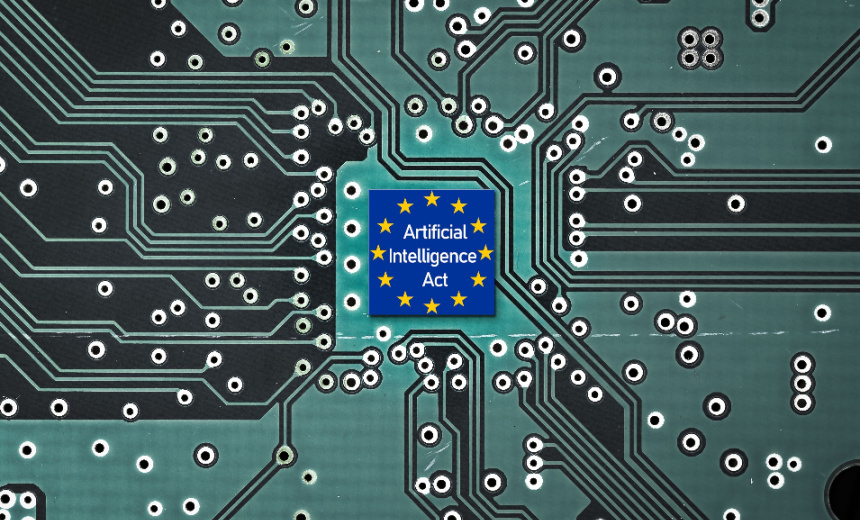Artificial Intelligence & Machine Learning,
Next-Generation Technologies & Secure Development
EU Dismisses Call for Enforcement Delay on AI Act

In a recent statement, a European official affirmed that all timelines surrounding new regulations for artificial intelligence would proceed without interruption. This assertion comes despite a collective plea from 50 business and technology leaders calling for a moratorium on the enforcement of the EU’s AI Act, citing concerns that it could jeopardize Europe’s ambitions in the AI sector.
A spokesperson for the European Commission, Thomas Regnier, firmly countered the request, stating, “There is no stop the clock, there is no grace period, there is no pause,” emphasizing the necessity of adhering to established legal deadlines. The urgency reflects the impending enforcement of significant provisions, including directives for General-Purpose AI (GPAI) models, set to take effect shortly.
The Computer & Communications Industry Association (CCIA), representing key technology and communication sectors, has voiced similar concerns. They highlighted the lack of essential guidance on new GPAI requirements as problematic, urging the EU to reconsider the timeline to avoid stifling innovation before regulations are fully defined.
Alongside this, an open letter from 50 prominent European business leaders addressed to Ursula von der Leyen, President of the European Commission, advocated for a two-year postponement of the AI Act’s enforcement. They are calling for a more coherent regulatory approach that minimizes confusion and complexity, thereby safeguarding Europe’s competitive edge in the global AI landscape.
The group, which includes representatives from major corporations like Airbus and Mercedes-Benz, expressed concerns that unclear regulations could hinder the potential for innovation, warning that without the right balance between regulation and development, Europe’s AI ambitions may be at risk.
The AI Act marks a significant regulatory milestone, being the first framework to prohibit high-risk AI applications, such as emotion recognition technologies in various sectors. Any infractions could result in substantial fines, potentially up to 35 million euros or 7% of an organization’s annual revenue, should individuals not comply with the stringent guidelines.
Originally passed on July 12, 2024, the AI Act is set for full enforcement on August 2, 2026. Prior to this, EU member states are tasked with establishing a national authority to oversee compliance, along with detailing specific penalties to be reported to the European Commission by the stipulated deadline. Key compliance requirements, especially for GPAI, which include risk mitigation evaluations and adherence to European regulations regarding copyright and privacy, will come into effect concurrently.
The regulatory environment presents significant challenges for various firms within the EU, with major players like Meta and Apple suspending certain AI capabilities in response to regulatory scrutiny. European data regulators are conducting investigations into compliance issues related to models like OpenAI’s ChatGPT, further highlighting the complexities at play.
On an international level, the U.S. government has expressed its dissatisfaction with the EU’s regulatory approach. At the Paris AI Action Summit, U.S. Vice President JD Vance remarked on the need for collaborative and flexible regulatory frameworks to foster AI development rather than hinder it, emphasizing the importance of transatlantic cooperation in navigating these emerging technologies.
As the EU moves forward with the AI Act, it remains to be seen whether any delays in enforcement will materialize, especially given recent statements from the EU’s technology minister suggesting possible postponements in light of guidance delays. The conversation around these regulations will continue to evolve, impacting the global AI landscape and presenting both opportunities and challenges for stakeholders.
